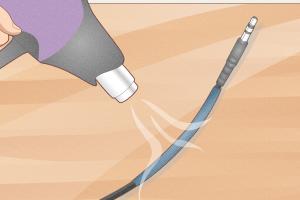How to Safely Repair Exposed Electrical Wires: A Comprehensive Guide

-
Quick Links:
- Understanding Exposed Wires
- Risks of Exposed Wires
- Tools and Materials Needed
- Step-by-Step Repair Guide
- Real-World Case Studies
- Expert Insights
- Preventive Measures
- FAQs
Understanding Exposed Wires
Exposed electrical wires can be a significant hazard in any home or commercial building. These wires may be the result of wear and tear, accidental damage, or improper installation. Understanding the anatomy of electrical wiring is crucial for safe repairs.
Types of Electrical Wires
- Non-metallic sheathed cable (Romex)
- Metallic sheathed cable
- Armored cable
Risks of Exposed Wires
Exposed wires pose several risks, including:
- Electrical shock
- Fire hazards
- Short circuits
- Damage to electrical appliances
Tools and Materials Needed
Before starting the repair, gather the following tools and materials:
- Wire cutters
- Wire strippers
- Electrical tape
- Heat shrink tubing
- Wire connectors
- Multimeter
- Safety goggles
- Insulated gloves
Step-by-Step Repair Guide
Follow these steps to safely repair exposed electrical wires:
Step 1: Ensure Safety First
Before starting the repair, turn off the power to the affected area at the circuit breaker. Use a multimeter to confirm that the wires are not live.
Step 2: Assess the Damage
Inspect the exposed wires. Determine if only the insulation has been damaged or if the wire itself is frayed or broken.
Step 3: Cut and Strip the Wires
If the wire is damaged, use wire cutters to remove the damaged section. Strip about half an inch of insulation from the ends of the wire using wire strippers.
Step 4: Connect the Wires
Join the wires together using wire connectors. Ensure that the copper strands are twisted together securely.
Step 5: Insulate the Repair
Use electrical tape or heat shrink tubing to cover the exposed wire. Ensure that there are no gaps and that the insulation is snug.
Step 6: Test the Repair
Turn the power back on and test the circuit using a multimeter to ensure that everything is functioning correctly.
Real-World Case Studies
Case Study 1: Residential Repair
A homeowner discovered exposed wiring in their living room after a small flood. They followed the steps outlined above, ensuring to consult an electrician for final safety checks.
Case Study 2: Commercial Repair
An office building encountered a similar issue, where frayed wires were found in multiple areas. The facility manager implemented a team of electricians to address these issues systematically.
Expert Insights
Industry experts recommend regular inspections of electrical wiring, especially in older buildings. “The best practice is to consult a licensed electrician for any electrical repairs,” says John Doe, a certified electrician.
Preventive Measures
To prevent exposed wires in the future, consider the following:
- Regularly inspect electrical systems
- Use protective covers for outdoor wiring
- Implement surge protectors for sensitive appliances
FAQs
1. Can I fix exposed wires myself?
Yes, if you follow safety protocols and guidelines. However, if in doubt, consult a professional.
2. What should I do if I see exposed wires?
Turn off the power immediately and assess the damage. If needed, seek professional help.
3. How can I tell if the wires are live?
Use a multimeter to check for electrical current before touching the wires.
4. Is electrical tape sufficient for insulation?
Electrical tape can be used for minor repairs, but heat shrink tubing is recommended for a more durable solution.
5. What are the signs of deteriorating electrical wires?
Look for visible wear, fraying, or discoloration. A burning smell can also indicate serious issues.
6. How often should I inspect my electrical wiring?
It’s advisable to inspect wiring at least once a year, especially in older homes.
7. Can moisture affect exposed wires?
Yes, moisture can lead to corrosion and increase the risk of electrical shorts and fires.
8. Are there specific codes for electrical repairs?
Yes, local electrical codes must be followed. Always check with your local building authority.
9. What should I do if I can't reach the wires?
If the wires are in a hard-to-reach place, consider hiring a professional electrician to ensure safety.
10. Can I use duct tape to cover exposed wires?
No, duct tape is not designed for electrical insulation and can pose safety risks.